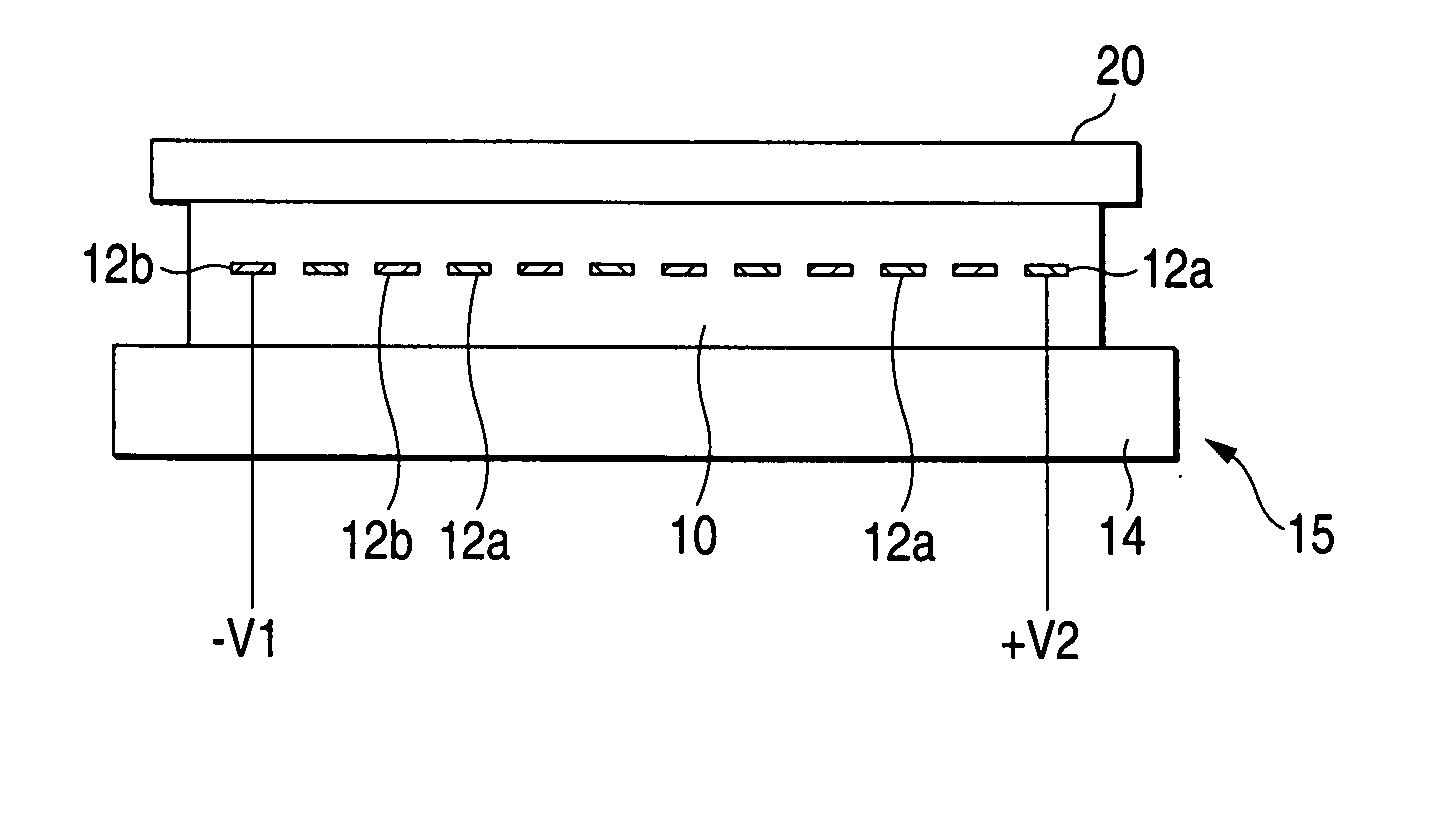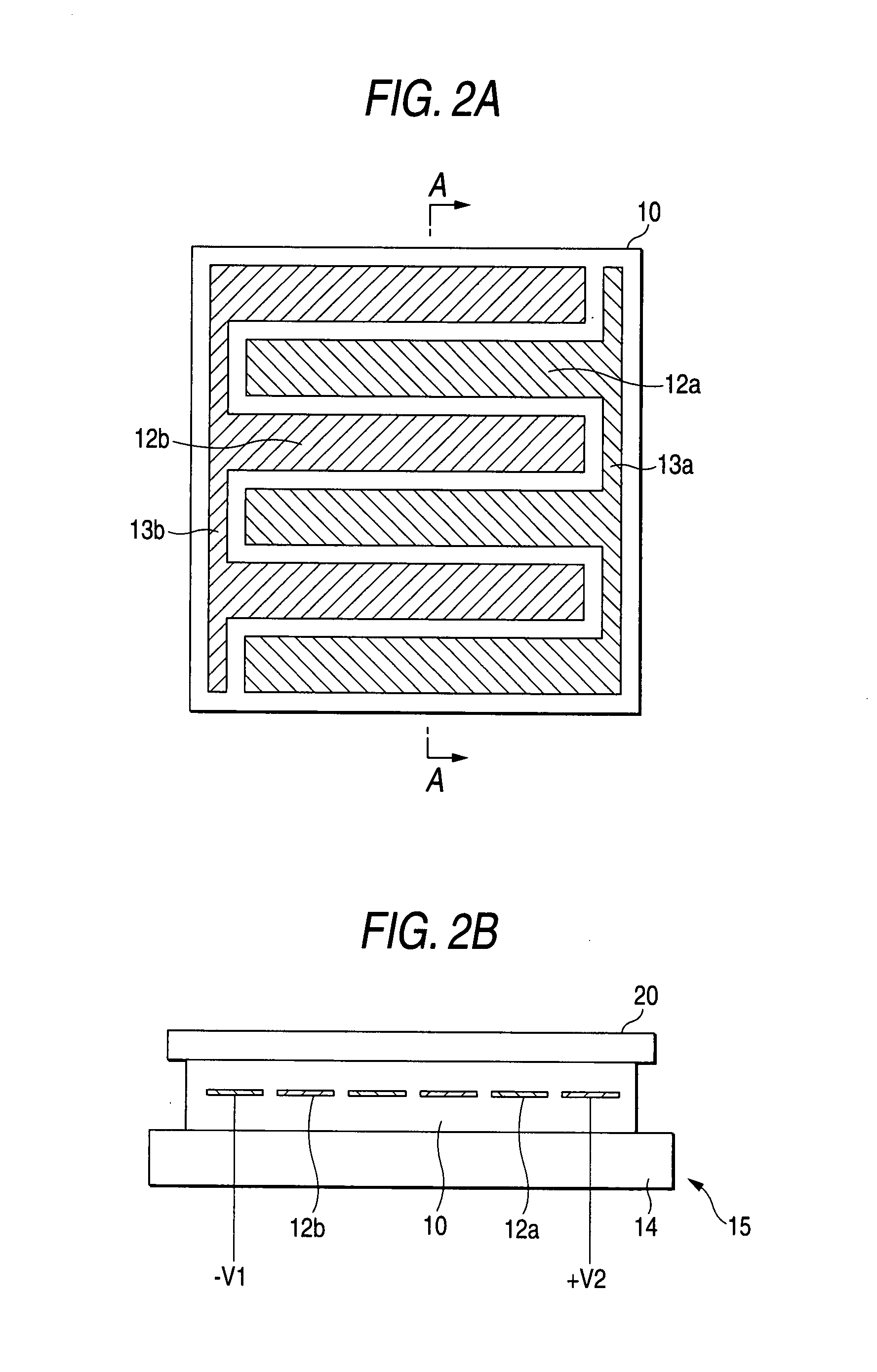Electrostatic chuck
- Summary
- Abstract
- Description
- Claims
- Application Information
AI Technical Summary
Benefits of technology
Problems solved by technology
Method used
Image
Examples
Embodiment Construction
[0034] Hereinafter, preferred embodiments of the invention will be concretely described with reference to the accompanying drawings.
(Example of Electrode Pattern)
[0035] FIGS. 1 to 3 illustrate examples of electrodes 12a and 12b formed in a chuck body 10 of an electrostatic chuck. All of the electrodes 12a and 12b are formed in a pectinate shape. The positive electrode 12a and the negative electrode 12b are formed in a parallel pattern, and alternately arranged in a direction crossing the electrode pattern (A-A line direction in the figures). The positive electrode 12a are connected to a positive high-voltage power supply through a common connection pattern 13a, and the negative electrode 12b are connected to a negative high-voltage power supply through a common connection pattern 13b.
[0036]FIGS. 1B and 2B illustrate that the electrodes 12a and 12b are formed in the inner layer of the chuck body 10 formed of a ceramic substrate (dielectric layer) and are each connected to the pos...
PUM
 Login to View More
Login to View More Abstract
Description
Claims
Application Information
 Login to View More
Login to View More - R&D
- Intellectual Property
- Life Sciences
- Materials
- Tech Scout
- Unparalleled Data Quality
- Higher Quality Content
- 60% Fewer Hallucinations
Browse by: Latest US Patents, China's latest patents, Technical Efficacy Thesaurus, Application Domain, Technology Topic, Popular Technical Reports.
© 2025 PatSnap. All rights reserved.Legal|Privacy policy|Modern Slavery Act Transparency Statement|Sitemap|About US| Contact US: help@patsnap.com



